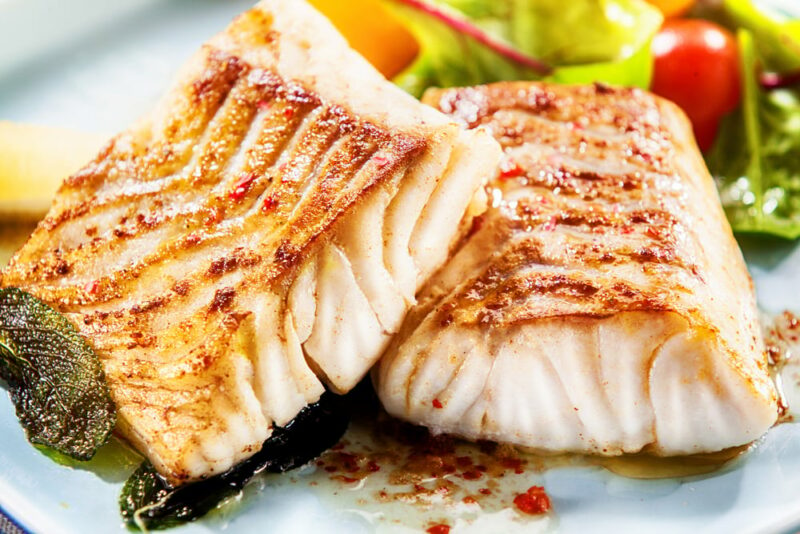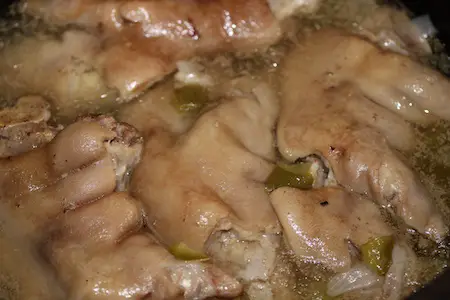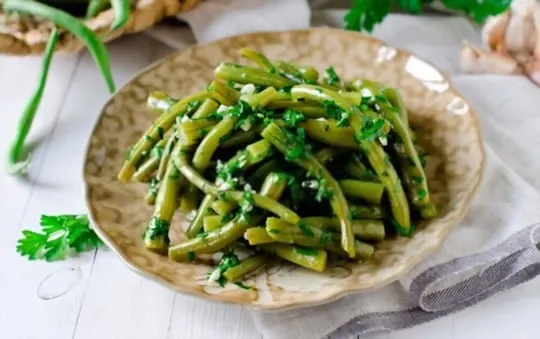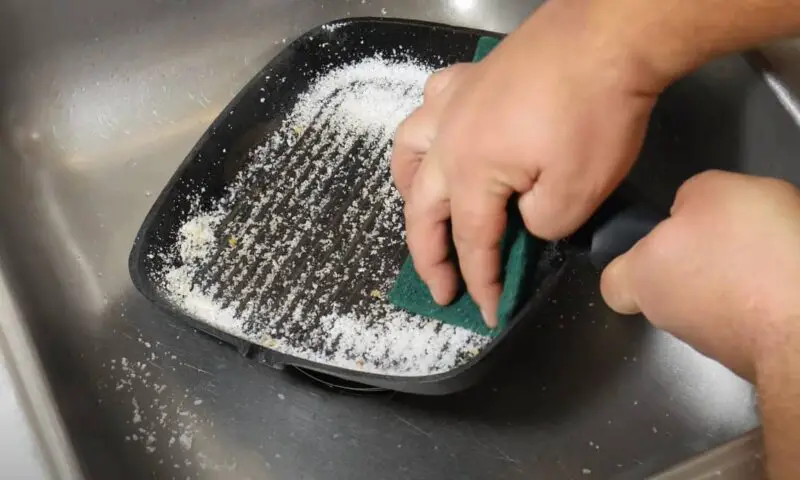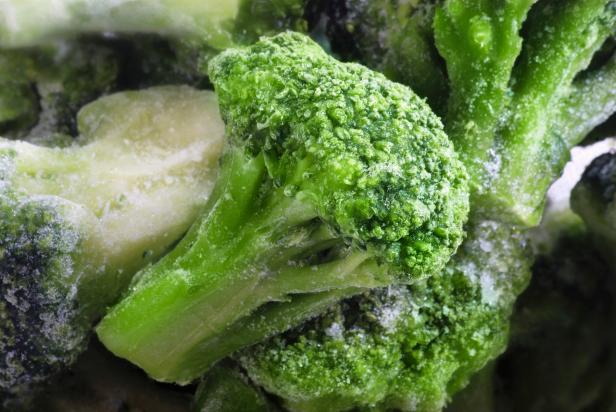Halibut, a large flat-bodied fish found in the North Atlantic and North Pacific oceans, is known for its delicate flavor and meaty texture. However, when it comes to cooking halibut, there’s often a debate over whether it should be fully cooked or not. In this article, we’ll explore the reasons behind this debate and provide guidelines for cooking halibut safely and deliciously.
The Risks of Undercooked Halibut
Like all seafood, undercooked halibut poses health risks if consumed. Raw or partially cooked fish can contain harmful bacteria and parasites that can cause foodborne illnesses such as salmonella and listeria. Eating undercooked fish can also lead to intestinal discomfort, nausea, vomiting, and diarrhea for those who consume it.
When it comes to halibut specifically, the risks of consuming undercooked fish are even greater than with other types of seafood. This is because halibut is a bottom-dwelling fish that eats other marine animals, which can carry harmful bacteria and parasites. Additionally, certain types of halibut, such as Pacific halibut from Alaska, have been found to contain high levels of mercury and other toxins.
Therefore, it is important to cook halibut thoroughly to ensure that all harmful bacteria and parasites are killed and any toxins are reduced to safe levels.
Common Myths About Cooking Halibut
Despite the risks associated with undercooked fish, many people still believe that halibut should be served rare or partially cooked. Here are some common myths about halibut cooking temperature:
Myth: “Halibut should be translucent in the middle”
This myth comes from the misconception that rare-cooked fish is more flavorful and tender than fully cooked fish. However, while it is true that cooking fish too much can make it dry and tough, halibut should not be served rare or translucent in the middle. While fully cooked halibut can still be moist and tender if cooked correctly, rare-cooked halibut is not safe to eat.
Myth: “Cooking destroys all the flavor”
Cooking halibut at the proper temperature will not destroy its flavor. In fact, properly cooked halibut can be incredibly delicious. Overcooked halibut, however, will be dry and unpleasant to eat.
Myth: “Sashimi-grade halibut can be eaten raw”
Sashimi-grade halibut may be labeled as safe to eat raw, but this doesn’t mean that it’s completely risk-free. While the risk of contamination may be lower with sashimi-grade fish, there is still a risk of foodborne illness if it is not handled and stored properly. Additionally, even sashimi-grade fish should be consumed in moderation due to the potential for mercury and other toxins.
Health Benefits of Properly Cooked Halibut
Halibut is a nutritious seafood choice that provides a variety of health benefits when properly cooked. Here are some of the nutritional benefits of eating halibut:
- Protein: Halibut is a lean source of protein that can help support muscle growth and repair.
- Omega-3 fatty acids: Halibut contains heart-healthy omega-3 fatty acids that have been shown to reduce inflammation and improve cognitive function.
- Vitamins and minerals: Halibut is a good source of vitamins B6 and B12, as well as minerals like selenium and phosphorus.
While these nutrients are valuable for maintaining good health, it’s important to remember that cooking method can have an impact on their availability. Cooking halibut properly can help maintain its nutritional value, while overcooking can cause nutrient loss.
Guidelines for Cooking Halibut Safely and Deliciously
Now that we know why it’s important to fully cook halibut, let’s look at some guidelines for doing so:
Recommended cooking temperature and time
The recommended internal temperature for cooked fish is 145°F. This means that the thickest part of the fish should reach this temperature before it is safe to eat. To ensure that your halibut is fully cooked, use a meat thermometer to check the internal temperature at the thickest part of the fish.
The amount of time needed to cook halibut will vary depending on the cooking method and thickness of the fish. However, as a general rule of thumb, plan on cooking your halibut for about 10 minutes per inch of thickness.
Different methods for cooking halibut
There are several different methods for cooking halibut, including grilling, baking, frying, and poaching. Each method has its own advantages and disadvantages when it comes to taste and texture. Here are some tips for achieving optimal taste and texture with each method:
- Grilling: Grilled halibut has a smoky flavor and crisp exterior that pairs well with spicy or tangy marinades. To grill halibut, preheat your grill to medium-high heat and lightly oil the grates. Brush the fish with oil and season with salt and pepper. Grill the fish for about 4-5 minutes per side or until it is cooked through.
- Baking: Baked halibut is a simple and healthy preparation that allows the natural flavor of the fish to shine. To bake halibut, preheat your oven to 400°F. Place the fish in a baking dish and drizzle with olive oil or butter. Season with salt, pepper, and any other desired herbs or spices. Bake for 10-15 minutes or until the fish is cooked through.
- Frying: Fried halibut is a popular preparation for fish and chips. To fry halibut, coat the fish in a batter or breading and deep fry until golden brown. While this method can result in a rich, crispy exterior, it should be used sparingly due to the high calorie and fat content.
- Poaching: Poached halibut has a delicate texture that pairs well with light sauces or broths. To poach halibut, bring a pot of water or broth to a simmer. Add the fish and simmer until it is just cooked through, about 5-8 minutes depending on thickness.
Suggestions for Serving Halibut
Now that you know how to cook halibut safely and deliciously, here are some serving suggestions to help you enjoy this flavorful fish:
- Pairing suggestions with side dishes and drinks: Halibut has a mild flavor that pairs well with a variety of sides, from roasted vegetables and grains to salads and fruit salsas. White wine or light beer complement the delicate flavor of the fish well.
- Creative recipe ideas using fully cooked halibut: Try switching up your usual halibut preparations with these creative recipes:
- Mexican-style fish tacos
- Pan-seared halibut with garlic butter sauce
- Grilled halibut kebabs with vegetables
Frequently Asked Questions About Halibut Cooking Temperature
1. What temperature should I cook my halibut to?
The recommended internal temperature for cooked fish is 145°F. This means that the thickest part of the fish should reach this temperature before it is safe to eat.
2. Is rare-cooked halibut safe to eat?
No, rare-cooked halibut is not safe to eat. Halibut should be cooked until it reaches an internal temperature of 145°F to ensure that all harmful bacteria and parasites are killed.
3. What is the best way to know when halibut is properly cooked?
The best way to know when halibut is properly cooked is to use a meat thermometer to check the internal temperature at the thickest part of the fish. When it reaches 145°F, it is safe to eat.
4. Can I still prepare halibut dishes without fully cooking the fish?
No, it is not recommended to prepare halibut dishes without fully cooking the fish due to the health risks associated with undercooked seafood.
Conclusion
Cooking halibut thoroughly is important for ensuring that it is safe and nutritious to eat. While overcooked fish can be dry and tough, properly cooked halibut can be incredibly delicious and nutritious.
By following these guidelines for cooking halibut safely and creatively, you can enjoy this flavorful fish in a variety of preparations. Whether you prefer grilled, baked, fried, or poached halibut, remember to cook it until it reaches an internal temperature of 145°F to ensure that it is fully cooked and safe to eat.
So try out some new halibut recipes today and savor the delicate flavor and meaty texture of this prized seafood!
Frequently Asked Questions
#### How long should I cook halibut to ensure it is fully cooked?
To ensure your halibut is fully cooked, it should be cooked for 10-12 minutes per inch of thickness. A handy way to check if your halibut is fully cooked is if the internal temperature reaches 145°F.
#### Can I eat halibut when it is slightly pink in the middle?
No, it is not advisable to eat halibut when it is still pink in the middle as this means that it has not been adequately cooked. Consuming undercooked seafood can lead to foodborne illnesses which can have unpleasant consequences.
#### Is it safe to eat raw halibut?
No, eating raw or undercooked fish such as halibut is not recommended. This is because raw fish may contain harmful parasites or bacteria that can cause illness. Always ensure to cook your halibut thoroughly before consuming.
#### What are some ways I can tell if my halibut is fully cooked?
There are several ways to tell if your halibut is fully cooked. The most reliable method is using a food thermometer to check its internal temperature, where the thickest part of the fillet should reach 145°F. Alternatively, you can check the flesh to ensure that it’s firm and opaque, and gently pull apart with a fork—the meat should flake apart with ease when it’s cooked through.
